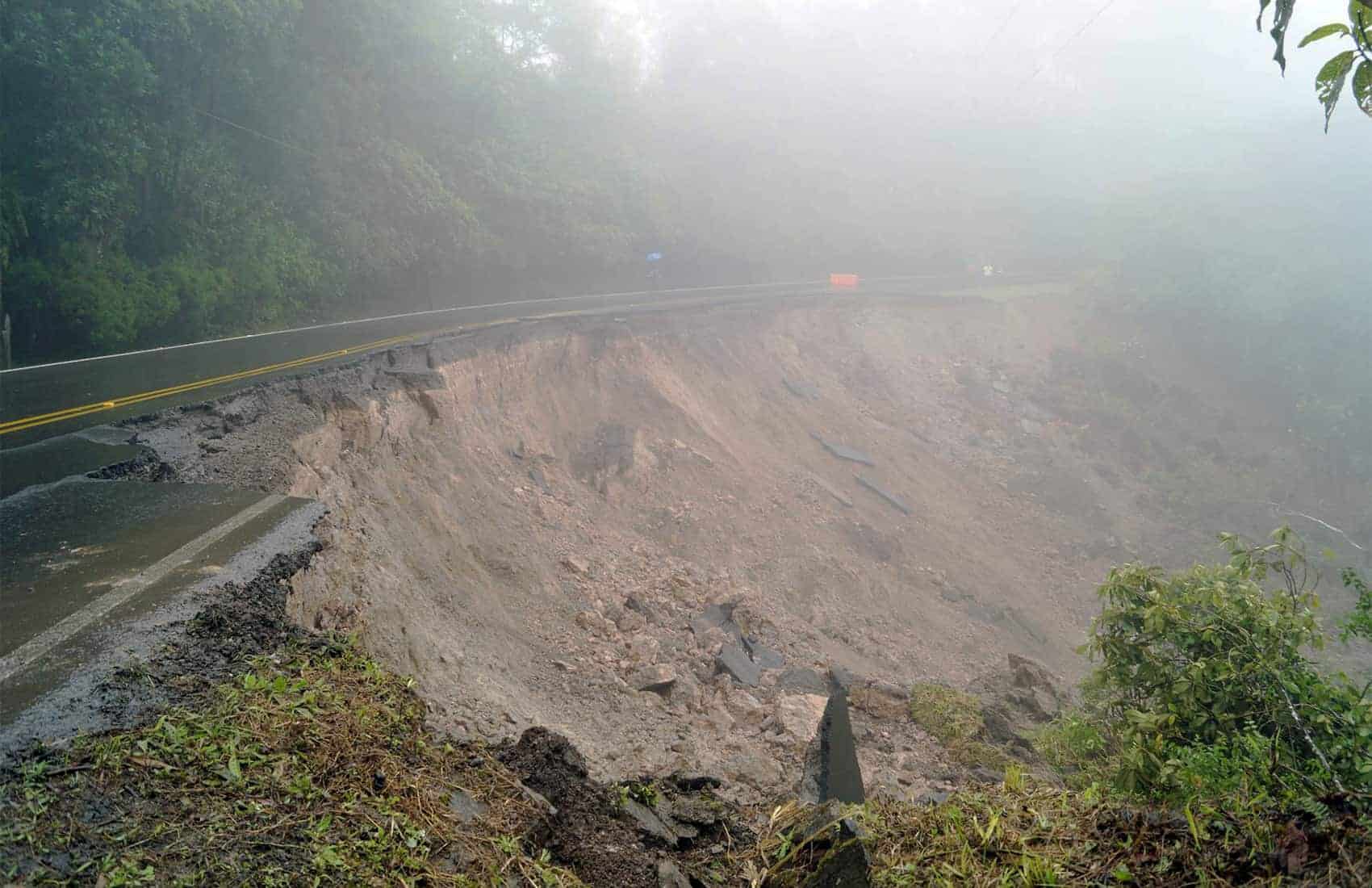Many retired expats and other foreigners relocate here and are completely unaware of how dangerous some of the country’s roads become during the rainy or season. This partially due to the fact that a good number of them do not read the Spanish newspapers or watch the weather reports on local TV.
Costa Rica is a mountainous country and traveling from one place to another by automobile often involves using roads that are difficult to negotiate at certain times of the year. A recent tragedy involving a passenger bus really brought this situation to light.
The six main roads in Costa Rica which can expose unsuspecting drivers to dangerous road conditions are:
- The first one is the road that links San José to Nicaraguan border to the north. The stretch called the Cambronero is especially worrisome because of recurrent landslides.
- Route 2 that connects San José with the southern zone of the country and the Panamanian borderer also has its issues. This especially true of a mountainous tow-lane stretch called “El Cerro de la Muerte.” At times, it is shrouded in fog, can be affected by landslides and sinking pavement.
- Route 32 which joins San José with the Caribbean coast is also a doozy. There is a stretch that runs through a mountainous rain forest, and at times there is poor visibility because of thick fog. Also, when it really rains hard, water can cascade onto the highway making it extremely dangerous to drive. The other problem are the large trucks that often slow down traffic. Furthermore, passing other cars here can be like playing Russian Roulette at times.
- Traveling on Highway 126 that passes through Vara Blanca can be challenging due to the quantity of rain and mudslides.
- Route 10 which connects the city of Cartago and Turrialba is another gem that has many dangerous sections.
- Highway 27 that goes from San José to Caldera on the Pacific Coast can also poses problems for drivers. There areas where walls of rock have had to be reinforced repeatedly with concrete because of the copious amount of precipitation and erosion.
In addition to the main highways there are smaller roads that can also be extremely hazardous during the country’s rainy season.: Route 239 and 317 which are in the vicinity of the town of Puriscal, 141 that goes to Zarcero, 118 near to the Poás Volcano in Alajuela and 209 in the Acosta area.
The Costa Rican government is aware that something must be done about these problem areas, but does not have the resources to invest in improving the infrastructure at this time. The only solutions is to exercise extreme caution if you have driving during the raining season, listen to the weather reports and if possible, avoid driving on dangerous roads.
About the Author
Christopher Howard has lived in the country over 40 years, is a Costa Rican citizen, Costa Rica’s foremost relocation expert and has been conducting monthly relocation/retirement tours to Costa Rica for 30 years. See www.liveincostarica.com. He is also the author of the one- of-a-kind bestselling, “New Golden Door to Retirement and Living in Costa Rica — the official guide to relocation” and the “Guide to Costa Rican Spanish,” that may be purchased through: www.costaricabooks.com or www.amazon.com






